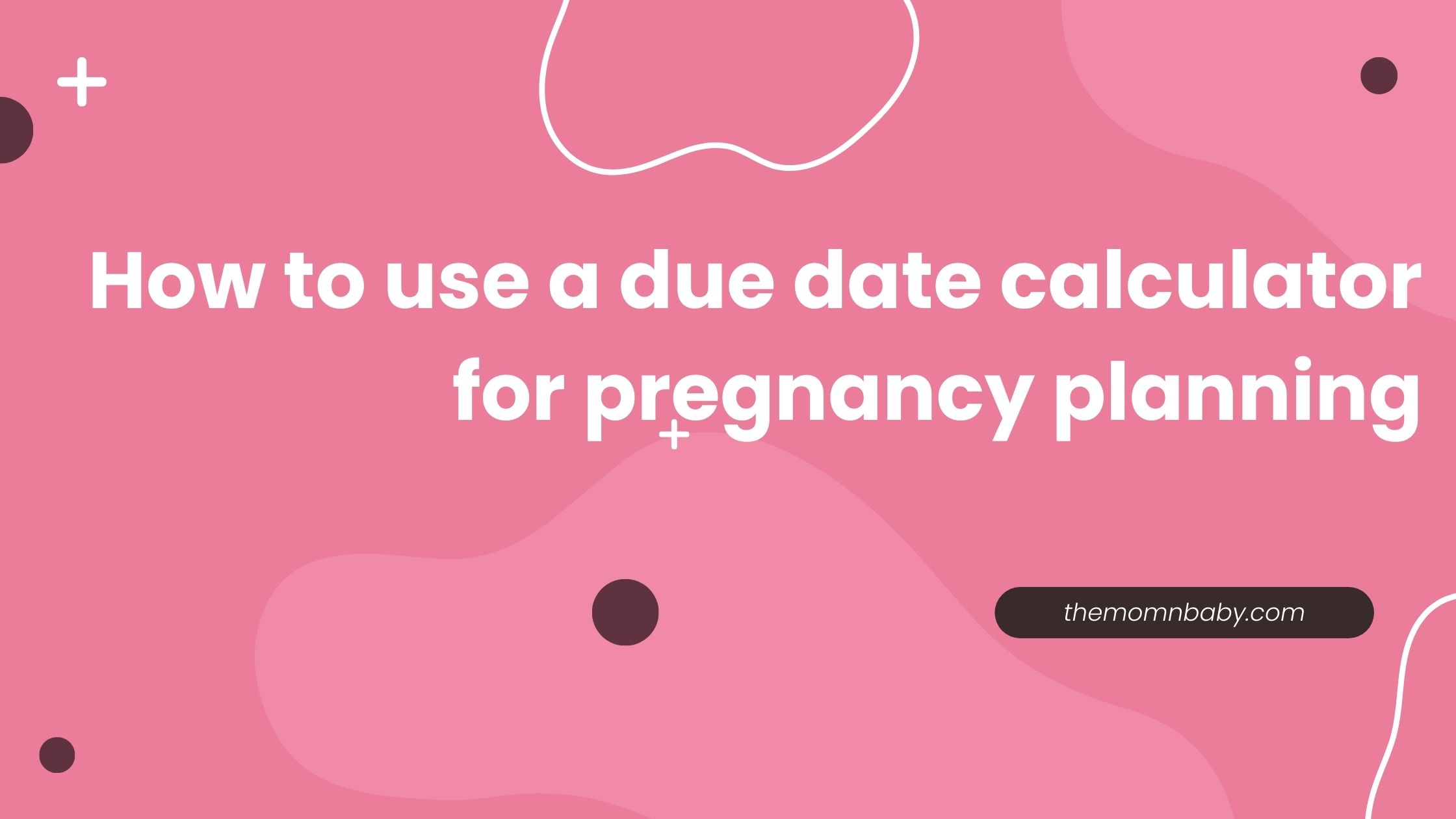
Baby’s position is a critical consideration as pregnancy progresses. It holds immense importance for expectant parents and healthcare providers alike. Monitoring and comprehending your baby’s position through their movements is not only intriguing but also holds substantial significance for the impending labor and delivery. This comprehensive guide will explore the pivotal role of the baby’s position in pregnancy, offer insights into how you can interpret it through fetal movements, and provide guidance on preparing for labor to ensure a secure and comfortable birthing experience.
The Significance of Baby’s Position in Pregnancy
The position of the baby within the womb is pivotal in determining the course of labor and the mode of delivery. A properly positioned baby ensures a smoother and safer journey through the birth canal. However, the baby’s position can vary, leading to different challenges during labor. Three primary positions are typically considered:
- Head Down (Vertex): This is the most favorable position for childbirth. In the head-down position, the baby’s head is directed toward the birth canal, making the passage through the pelvis more straightforward and reducing the chances of complications.
- Breech: In a breech position, the baby’s buttocks or feet are facing downward. Breech births can be more challenging and may necessitate a cesarean section or additional interventions.
- Transverse or Sideways: In rare cases, the baby may be positioned horizontally across the womb, making vaginal birth virtually impossible. A cesarean section is typically required in such situations.
Understanding your baby’s position can provide you with valuable insights into your birthing experience and help you and your healthcare provider make informed decisions regarding labor and delivery.
Deciphering Baby’s Position Through Fetal Movements
Feeling your baby’s movements is one of the most heartwarming and reassuring aspects of pregnancy. Beyond the emotional connection it fosters, these movements serve as indicators of your baby’s positioning within the womb. As your baby continues to grow and develop, their movements can help you grasp their orientation.
Kicks and Punches:
- Early in pregnancy, you may feel kicks and punches in the lower part of your abdomen. This often signifies that your baby’s head is positioned upward near your ribcage.
Hiccups:
- Hiccups are a distinct and rhythmic movement you may feel in your lower abdomen. These movements are typically associated with the baby’s head being positioned downward.
Rolling Sensations:
- As your due date approaches, you might experience rolling or turning sensations in your belly. These indicate that your baby is changing positions in preparation for birth.
Pressure in the Pelvic Area:
- If you notice an increased sensation of pressure in your pelvic region, combined with movements concentrated in that area, it may be an indication that your baby’s head has descended into the pelvis, aligning for birth.
Breathing Space:
- When your baby’s head moves lower into your pelvis, you may experience more room to breathe as the pressure on your diaphragm lessens. This is another sign of a well-positioned baby.
It’s important to remember that fetal movements are unique to each pregnancy. While the patterns described above can provide insights into your baby’s position, consulting with your healthcare provider for confirmation and guidance is essential.
The Role of Healthcare Providers To Detect Baby’s Position
Your healthcare provider plays a pivotal role in monitoring your baby’s position and ensuring a healthy pregnancy and delivery. Here are some ways in which healthcare professionals assess and manage baby position:
- Prenatal Check-ups: Regular prenatal check-ups are essential for monitoring the baby’s growth, position, and overall well-being. During these appointments, your healthcare provider will often palpate your abdomen to assess the baby’s position.
- Ultrasound Scans: Ultrasound scans offer precise images and measurements that help determine the baby’s position accurately. This technology provides detailed insights into the baby’s orientation, making it a valuable tool for assessing position.
- External Cephalic Version (ECV): If the baby is found to be in a breech position, your healthcare provider may recommend an ECV. This procedure involves manually turning the baby to a head-down position, reducing the need for a cesarean section.
- Monitoring Progress: As your due date approaches, your healthcare provider will closely monitor the baby’s progress, checking for signs of engagement and descent into the pelvis.
- Discussion of Delivery Options: Depending on the baby’s position and your individual circumstances, your healthcare provider will discuss delivery options with you. This may include vaginal birth, planned cesarean section, or other interventions to ensure a safe and successful delivery.
Also Read : C-Section & Vaginal Delivery – Choosing The Best Birth Option
Also Read : Planned C-Section (Cesarean Section): Questions and Possible Reasons
Preparing for Labor and Delivery
As the final weeks of pregnancy approach, it’s essential to prepare for labor and delivery. Understanding your baby’s position and taking proactive steps can significantly contribute to a smoother and more comfortable birthing experience.
Stay Active:
- Engage in gentle exercises and movements, such as walking, swimming, and prenatal yoga. These activities can encourage your baby to assume the optimal head-down position for birth.
Pelvic Tilts:
- Incorporate pelvic tilts into your daily routine. Pelvic tilts help maintain flexibility in your pelvic region, supporting your baby’s positioning.
Breathing Exercises:
- Practice deep breathing techniques to relax and create more space for your baby to move into the ideal head-down position.
Talk to Your Healthcare Provider:
- Maintain open communication with your healthcare provider regarding your baby’s position and any concerns you may have. Regular check-ups and discussions will help ensure that you are both on the same page regarding your birthing plan.
Labor Positions:
- Familiarize yourself with different labor positions and techniques that can aid in promoting optimal positioning during labor. Kneeling, squatting, using a birthing ball, or adopting hands-and-knees positions can encourage the baby to navigate the birth canal more effectively.
Prenatal Education:
- Consider enrolling in prenatal education classes offered by your healthcare provider or local community. These classes provide valuable information about the birthing process, various labor positions, and relaxation techniques to alleviate labor pains.
Prepare Mentally and Emotionally:
- Preparing for childbirth encompasses mental and emotional readiness. Create a birthing plan that outlines your preferences, discuss it with your healthcare provider, and engage in relaxation and mindfulness practices to reduce anxiety and promote a calm and positive birthing experience.
- Also Read : Labor And Delivery Preparation : What To Expect | Birth Experience
Understanding your baby’s position through their movements is a profound aspect of your pregnancy journey. Beyond the joy it brings, it offers invaluable insights into the preparation for labor and delivery. Monitoring your baby’s position, in collaboration with the guidance of your healthcare provider, ensures that you are well-prepared for the birthing process. Embrace this time of discovery and anticipation as you prepare to welcome your little one into the world with confidence in their well-positioned journey. With the right knowledge and support, you can look forward to a safe and joyful birthing experience.
FAQ
Q. Why is knowing my baby’s position important during pregnancy?
- Understanding your baby’s position is crucial as it can significantly impact the ease and safety of your labor and delivery. Knowing the position helps you and your healthcare provider make informed decisions about your birth plan.
Q. Can I change my baby’s position if it’s unfavourable for birth?
- In some cases, healthcare providers can attempt to manually change the baby’s position through a procedure called External Cephalic Version (ECV). However, the success of this procedure depends on various factors, and not all babies can be repositioned.
Q. Are there specific exercises or techniques to encourage my baby to be in the head-down position?
- Gentle exercises, such as prenatal yoga and pelvic tilts, can help encourage the baby to assume the head-down position. However, always consult with your healthcare provider before starting any exercise routine during pregnancy.
Q. What happens if my baby remains in a breech or unfavorable position at the time of delivery?
- If your baby is in a breech or challenging position, your healthcare provider will discuss delivery options with you. This may include a planned caesarean section or other interventions to ensure a safe and successful delivery.





